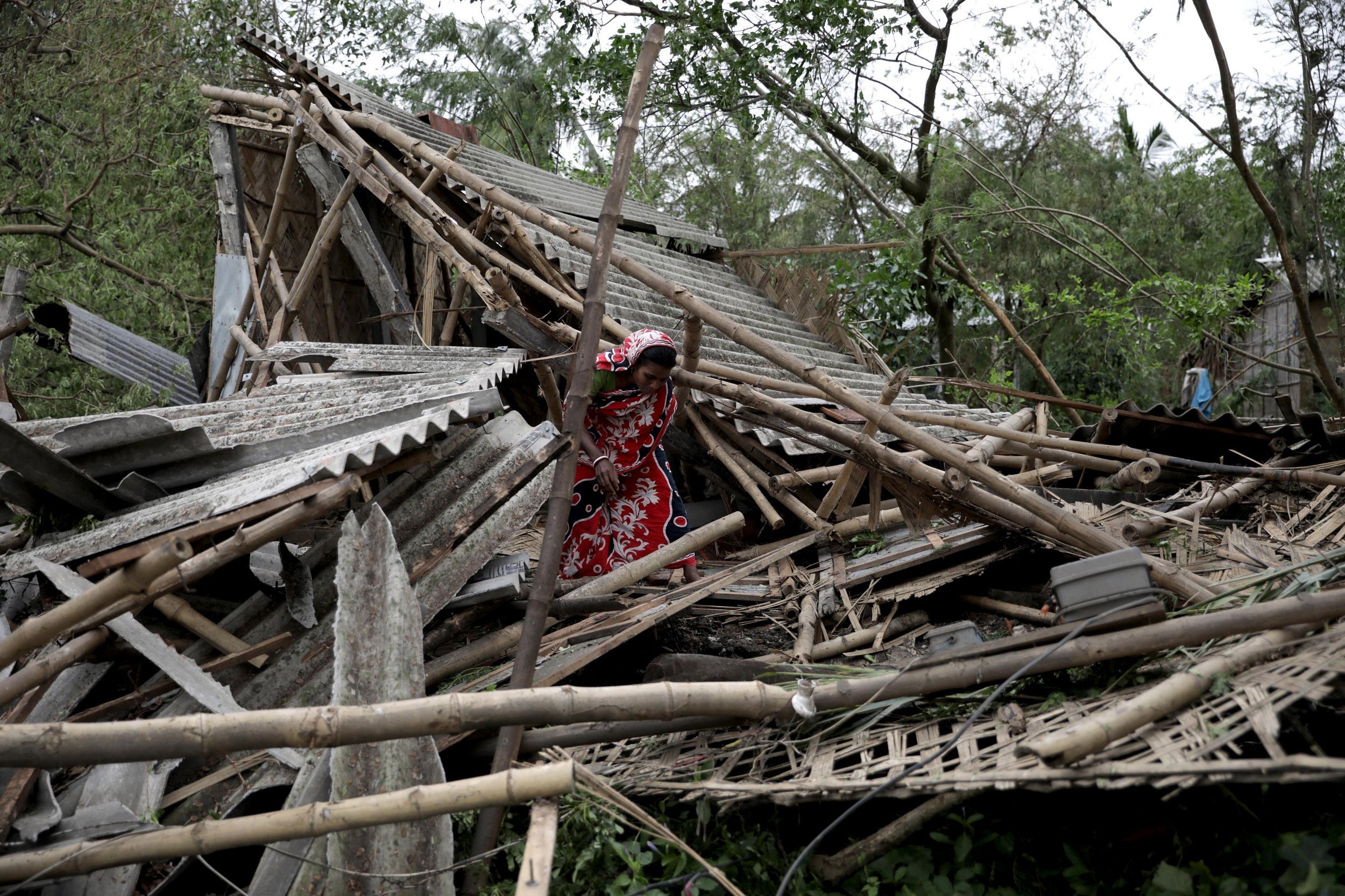Cyclone Amphan: ‘Most-powerful’ storm kills 84 in India and Bangladesh
Officials are assessing the devastation wrought by Cyclone Amphan, which achieved record windspeeds in the Bay of Bengal before making landfall in India on Wednesday afternoon

At least 84 people have been killed by the super cyclone that swept across India and Bangladesh from the Bay of Bengal late on Wednesday, according to local officials.
Addressing the media, the chief minister of West Bengal state in India said she had "never seen such a disaster before". Millions were evacuated ahead of the storm, which has caused extensive damage along the coastline, in India's marshy Sundarbans region and to the major city of Kolkata.
Chief minister Mamata Banerjee said 72 were killed in West Bengal alone, where the storm made landfall at 2.30pm on Wednesday local time. Two people died in neighbouring Odisha state, officials there said. And earlier, Bangladeshi officials said a Red Crescent volunteer was among 10 killed in that country.
Ms Banerjee said that most of those who died were killed by falling trees and electricity pylons. Power has been lost for much of the 14 million strong population of Kolkata, India's third-largest city.
The families of those who have died will receive compensation amounting to Rs 250,000 (£2,700), Ms Banerjee said.
Amphan, the first super cyclone to hit India and Bangladesh since 1999, achieved windspeeds of 270kmph (167mph) in the Bay of Bengal on Monday night, making it the most powerful cyclone on record in the region.
The storm slowed as it hit the coast, but was still categorised as a "very severe" cyclone with sustained winds in excess of 100mph and gusts up to 118mph, and has caused extensive flooding and damages.
Storm surges saw sea water driven up to 15miles inland in places, and flooding is likely to worsen with continued heavy rainfall forecast for the coming week.
"We have never seen or heard anything like it. Windows rattled, the house shook, outside trees caught fire, while others collapsed. We thought we would die," Javed Khan, a taxi driver in Kolkata, told the Associated Press.
The roof of a school building in Howrah, a suburb of Kolkata, flew off in the wind. Numerous coconut trees were struck by lightning and rising rivers overflew their banks.
Ms Banerjee said many centuries-old buildings were damaged in Kolkata, the state capital formerly known as Calcutta that was the capital of British-occupied India for almost 150 years.
As well as the power cuts, phone connectivity was badly affected and some residents said their inability to charge mobile phones meant they were unable to access relief measures.
"We are facing three crises: the coronavirus, the thousands of migrants who are returning home and now the cyclone," Ms Banerjee said, a reference to the daily-wage labourers who fled India's financial centres Delhi and Mumbai to return to the state during the nationwide Covid-19 lockdown.
In Bangladesh, at least one million people were without electricity, according to the country's ministry of power.
Hundreds of villages were submerged by a tidal surge across the vast coastal region, disaster-response authorities said. About a dozen flood protection embankments have been breached.
Additional reporting by agencies
Join our commenting forum
Join thought-provoking conversations, follow other Independent readers and see their replies
Comments